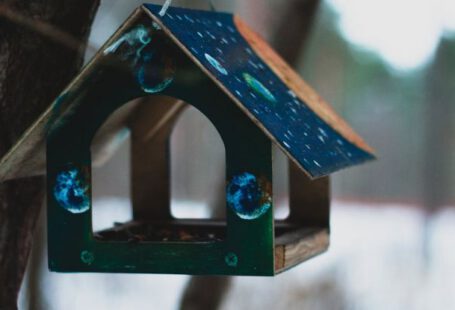Reducing waste output is a crucial step towards living a more sustainable lifestyle. One effective way to achieve this is by engaging in do-it-yourself (DIY) projects that help minimize waste production. By getting creative and repurposing items that would typically be discarded, you can not only reduce your environmental impact but also save money and unleash your inner craftsman. Let’s explore some DIY projects that can assist in reducing waste output.
Repurposing Glass Jars for Storage
Glass jars are versatile containers that can be easily repurposed for various storage needs. Instead of throwing away empty food jars, consider washing them out and removing the labels to create stylish storage solutions. Use them to store bulk goods like grains, nuts, and seeds in your kitchen pantry. You can also repurpose glass jars to organize small items such as buttons, beads, or office supplies. Get creative by decorating the jars with paint, labels, or ribbons to add a personal touch to your storage solutions.
Upcycling Clothing and Fabrics
Instead of throwing out old clothing or fabric scraps, consider upcycling them into new items. Turn worn-out jeans into trendy denim shorts, transform an old t-shirt into a reusable shopping bag, or repurpose fabric scraps into colorful patchwork quilts. Upcycling not only reduces textile waste but also allows you to express your unique style through handmade creations. Get inspired by browsing online tutorials or experimenting with your own design ideas to breathe new life into old textiles.
Creating DIY Compost Bins
Composting is an effective way to reduce organic waste and create nutrient-rich soil for your garden. Instead of purchasing a compost bin, consider building your own using materials you already have at home. You can repurpose a plastic storage container, wooden pallets, or even repurpose an old trash can to create a DIY compost bin. By composting food scraps, yard waste, and other organic materials, you can divert waste from landfills and contribute to a healthier ecosystem in your own backyard.
Repurposing Furniture
Old furniture pieces that are no longer in use can be transformed into stylish and functional pieces through DIY projects. Instead of discarding a worn-out dresser or table, consider giving it a makeover with a fresh coat of paint, new hardware, or decorative finishes. Repurposing furniture not only reduces waste but also allows you to personalize your living space with unique and eco-friendly pieces. Explore different furniture restoration techniques such as decoupage, stenciling, or distressing to breathe new life into old pieces and showcase your DIY skills.
DIY Beeswax Wraps
Reduce your reliance on single-use plastic wrap by making your own beeswax wraps as a sustainable alternative. Beeswax wraps are eco-friendly, reusable, and perfect for storing food items such as fruits, vegetables, cheese, and bread. To make DIY beeswax wraps, all you need is cotton fabric, beeswax pellets, jojoba oil, and parchment paper. By melting the beeswax and coating the fabric, you can create custom-sized wraps that can be used again and again, reducing the need for disposable plastic wrap and contributing to a greener kitchen.
Embracing DIY projects that focus on waste reduction not only benefits the environment but also allows you to unleash your creativity and resourcefulness. By repurposing items, upcycling materials, and creating homemade solutions, you can play a proactive role in minimizing waste output and living a more sustainable lifestyle. Challenge yourself to explore new DIY projects that align with your interests and values, and discover the joy of transforming waste into something meaningful and useful. Let your creativity flow and inspire others to join you on the journey towards a greener and cleaner future.





